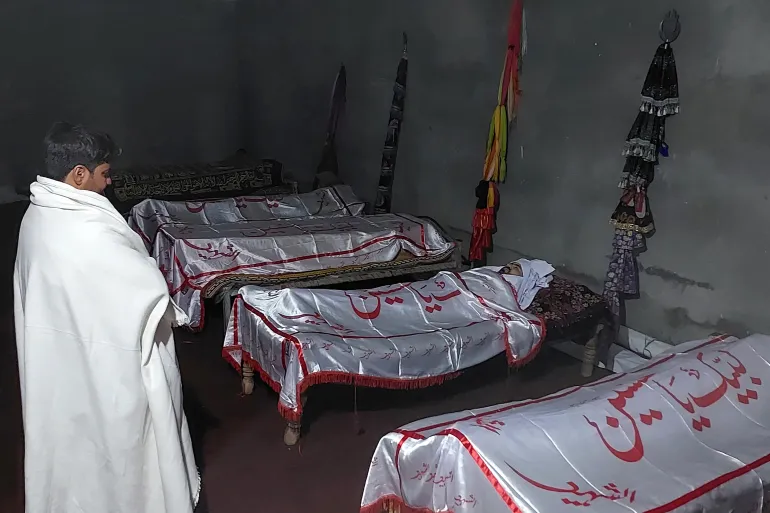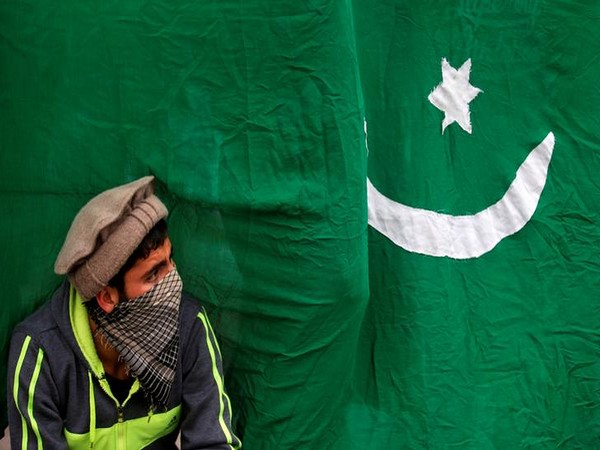Asad Ahmed
Pakistan is once again reeling from a brutal wave of sectarian violence, this time in the Kurram district of Khyber Pakhtunkhwa province. Over 40 people, including six women, were killed on Thursday when gunmen ambushed a convoy of Shia Muslims traveling from Parachinar to Peshawar. This horrific attack has escalated into widespread violence between Sunni and Shia Muslim communities, claiming at least 150 lives in recent months and plunging the region into chaos.
A Coordinated Attack and Its Aftermath
The massacre occurred as the convoy, accompanied by police escorts, was targeted by assailants who sprayed bullets on vehicles, killing 42 and injuring 20. Survivors described a harrowing scene, with bodies arriving in Parachinar hours later. The Shia community immediately declared three days of mourning. Funeral processions filled the streets of the city, with coffins bearing the poignant phrase “Labbaik ya Hussein” in remembrance of their religious martyrdom.
Protests erupted, with locals chanting anti-government slogans and demanding justice. Anger over the perceived failure of authorities to protect citizens spilled over as check posts and city gates were set on fire. Despite calls for calm from community elders, tensions only worsened.

A Cycle of Retaliation
In response to Thursday’s massacre, retaliatory attacks erupted on Friday evening, targeting Sunni locations, including the Bagan Bazaar. The assault, reportedly led by Shia groups, resulted in the destruction of over 300 shops and 100 homes. Sunni tribes retaliated, using heavy and automatic weapons, turning parts of Lower Kurram into a war zone. Videos on social media showed markets engulfed in flames and gunfire echoing across the mountainous region.
The clashes have now drawn comparisons to a years-long cycle of violence in Kurram, where unresolved land disputes and historical grievances have frequently morphed into deadly sectarian battles.
Government Response and Public Outcry
Local officials imposed a curfew and suspended mobile services to stem the violence, but these measures have done little to restore calm. Security forces have been deployed, but criticism against the government’s failure to prevent such incidents is mounting. Protesters argue that the authorities have long neglected Kurram’s unique challenges as a historically restive and semi-autonomous tribal area.
A senior administrative official, speaking anonymously, described the situation as “out of control,” with little hope of an immediate resolution despite efforts involving local elders.

A Divided Nation
The sectarian divide in Pakistan is deepening. Shia Muslims, who constitute about 15% of the country’s 240 million population, often face discrimination and violence in the Sunni-majority nation. While peaceful coexistence has been the norm in many areas, districts like Kurram remain flashpoints.
The recent violence underscores the fragility of peace in a region where decades of neglect, extremism, and political instability have created fertile ground for sectarian strife.
Hope Amid Despair
Amid the grief and destruction, individuals like Ali Ghulam, who lost his nephew, encapsulate the profound human cost of this conflict. “He was a noble man working to feed his children. Now, we are worried about his family and how they will survive,” said Ghulam.
As Pakistan mourns, the country faces an urgent need for reconciliation and security reforms. Without decisive action, the wounds of Kurram could deepen, spreading instability further in a nation already grappling with complex challenges.
Asad Ahmed, Sub Editor The Voice News
